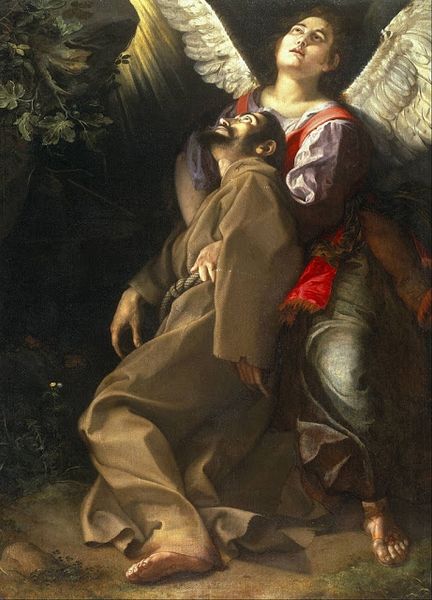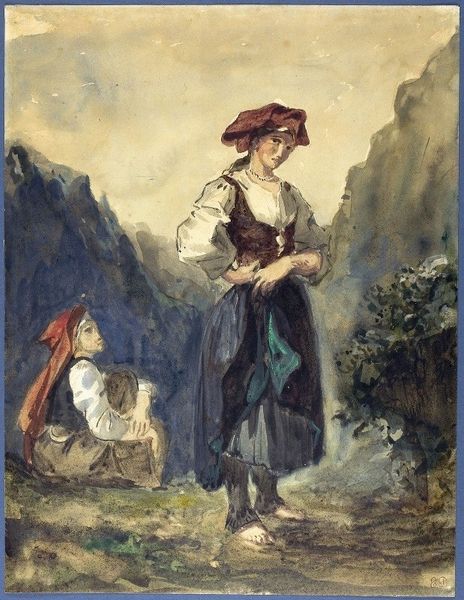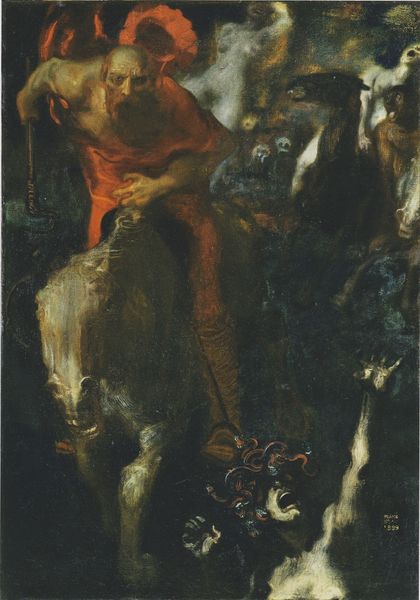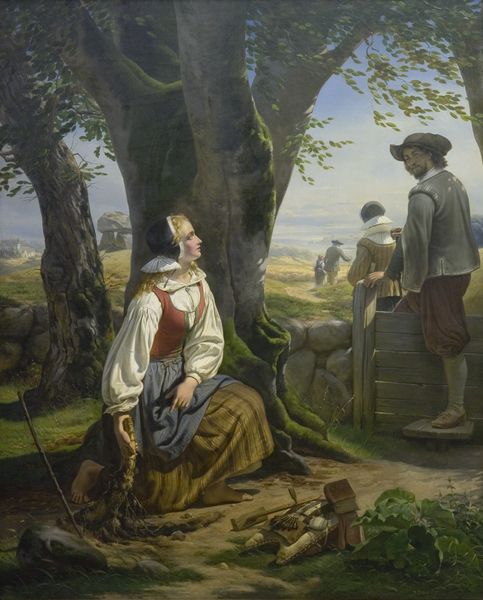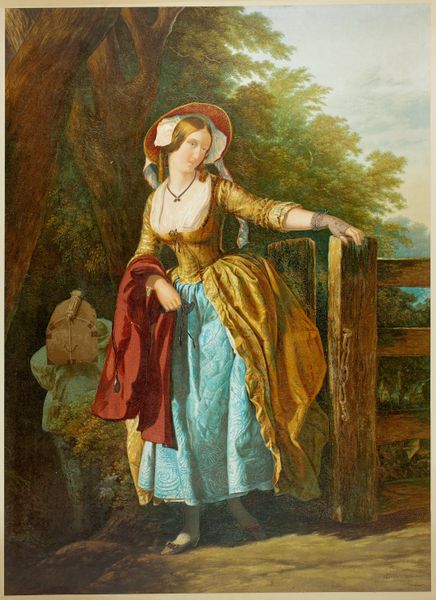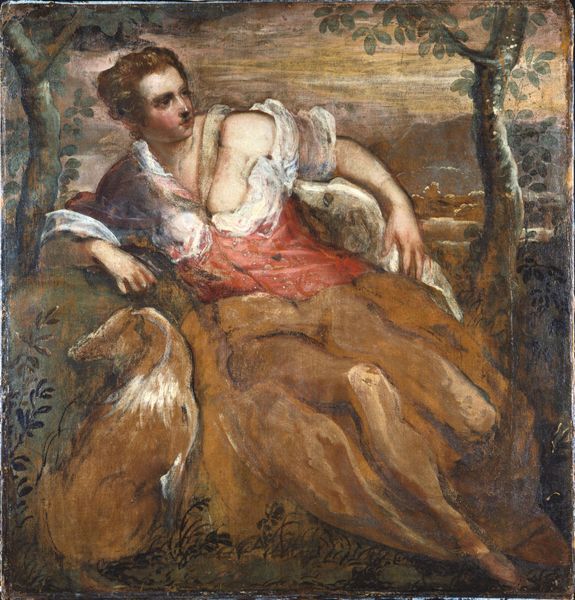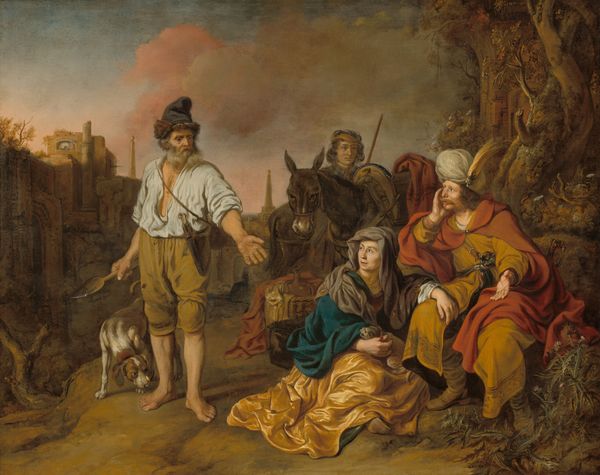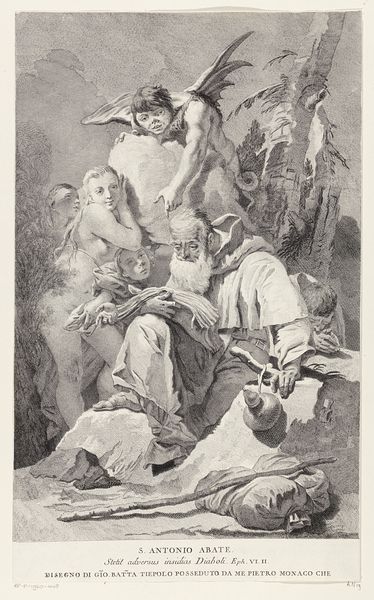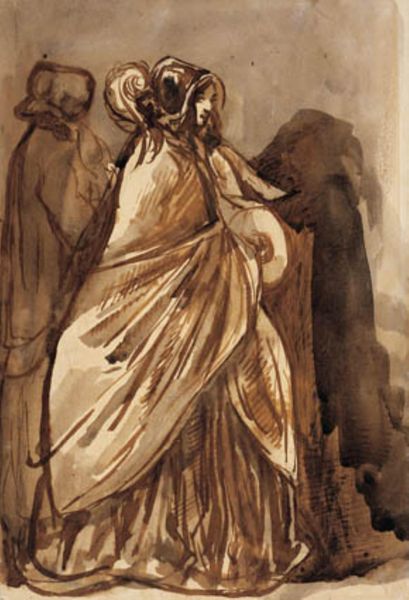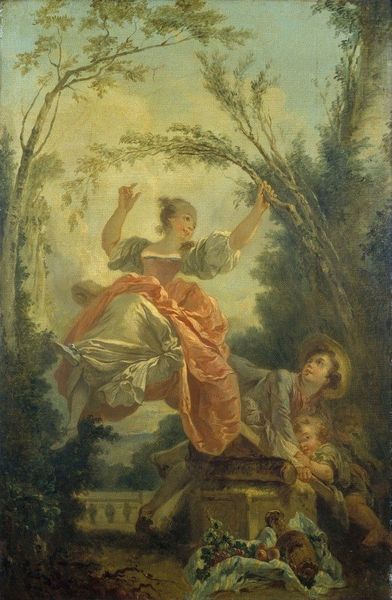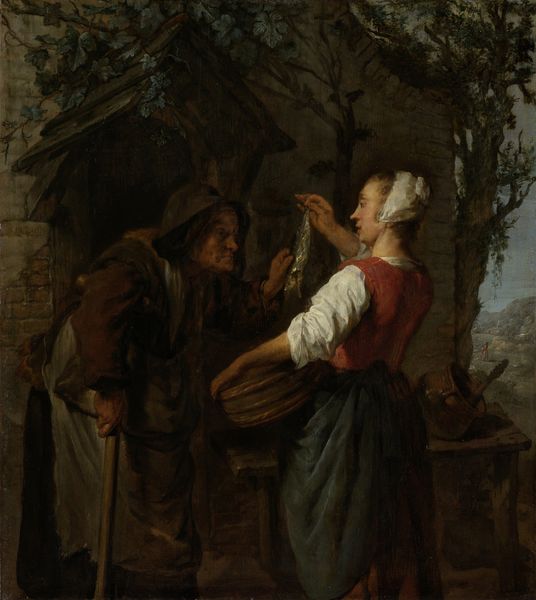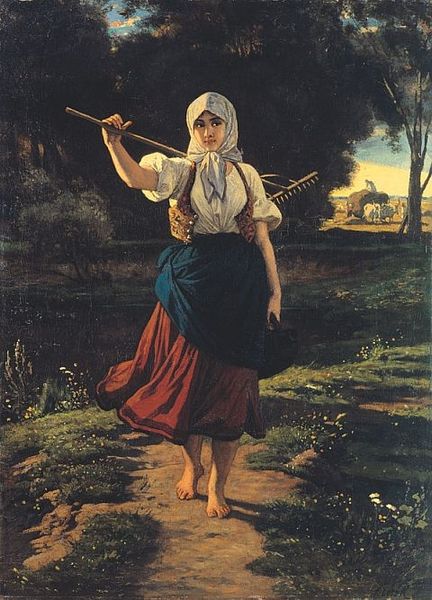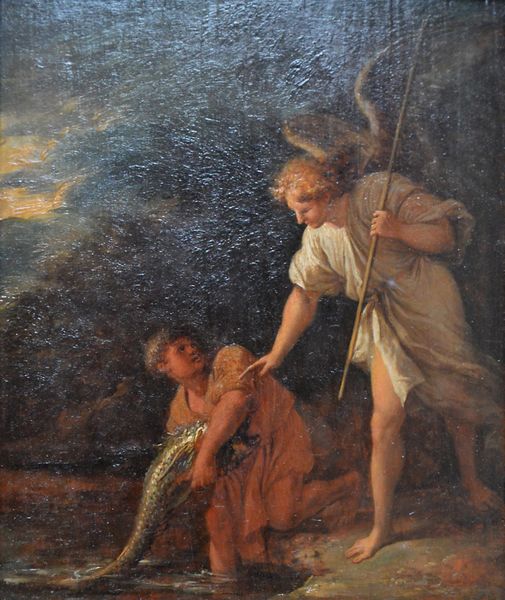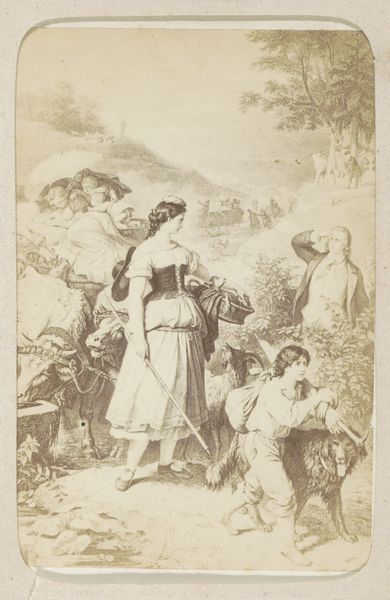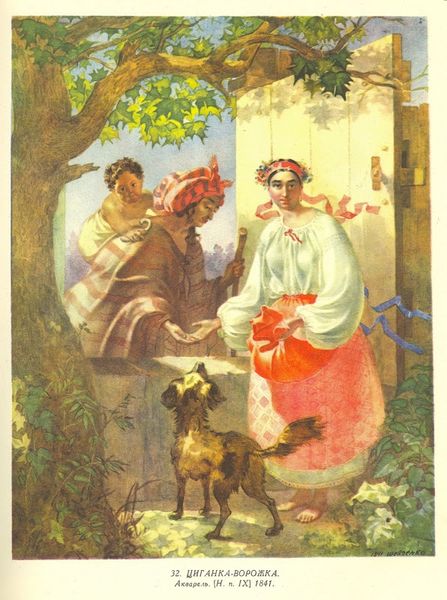
painting, oil-paint
#
portrait
#
narrative-art
#
painting
#
oil-paint
#
figuration
#
oil painting
#
romanticism
#
genre-painting
Dimensions: 93 x 72.3 cm
Copyright: Public domain
Curator: Let’s take a look at Taras Shevchenko's "Kateryna" from 1842, housed at the Shevchenko National Museum in Kyiv. Editor: It's…melancholy. The palette is muted, save for the vibrant red of her skirt and headdress. It creates such a stark contrast, drawing you to her. Curator: Indeed. "Kateryna" is much more than just a pretty picture. Shevchenko, as a national poet and artist, uses this portrait to confront the systemic oppression and gendered violence pervasive in 19th-century Ukrainian society. It critiques power structures by highlighting the vulnerable position of women. Editor: Vulnerable is the right word. You can almost feel the weight of her heavy skirt and bare feet – it makes the material circumstances so real. The choice of oil on canvas gives the figures this raw, almost tactile quality. It's not just a painting, it's almost a document. Curator: Precisely. The narrative— a woman betrayed by a Russian officer—resonates deeply within the historical context of imperial Russia's dominion over Ukraine, symbolizing the exploitation and disenfranchisement suffered by the Ukrainian peasantry. Her shame becomes a political statement. Editor: I'm also drawn to the presence of the figures in the background. Is that a father or brother huddled with despair? The textures are rendered so simply and then look at the crisp, militant form of the officer, like two distinct spheres of production colliding within a single frame. Curator: That tension is central to understanding the piece. The background underscores the social fabric torn by the power dynamics at play. The lone figure, on the steppes, riding off and leaving behind devastation. This creates a devastating representation of abandonment and societal rupture, issues deeply entwined with national identity. Editor: It definitely provides an angle into the complicated, perhaps intentionally exploitative methods used in nation-building projects. What materials did he utilize to evoke that particular kind of starkness? Curator: He certainly knew how to select media and manipulate the textures in order to underline the narrative themes he was building. "Kateryna" urges us to contemplate historical injustices, reflect upon power structures, and honor the resilience of those who endured systemic oppression. Editor: Seeing this now reminds me about the importance of engaging directly with materiality of trauma in visual representation. It’s not just about history; it's about building new means for more accountable futures.
Comments
No comments
Be the first to comment and join the conversation on the ultimate creative platform.
